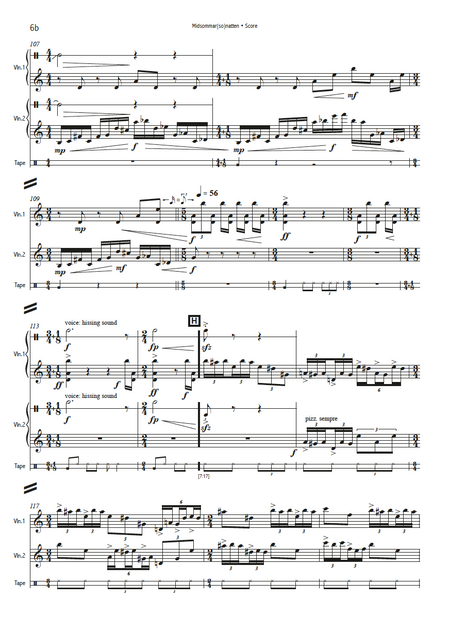RÄISÄNEN
Tomi
Midsommar(so)natten
(2010/2014/2024)
(a) Violin, Cello, Tape (2010/2025)
(b) Violin Duo, Tape (2014/2024)
Duration 10 min.
First performance (a) on June 29, 2010, in Fårö, Gotland, Sweden by Karin Hellqvist, violin and Adina Sabin, cello
First performance (b) on May 9, 2014, in London by Marie Schreer and John Garner. June 25, 2024 (revised version), at the Romsey Festival, U.K. by Emma Roijackers and Luke Hsu.
The Swedish film director Ingmar Bergman understood how simple musical elements can create a profound impact. For instance, he often used the ticking and clanging sounds of old mechanical clocks, which feature prominently in many of his films. In 'Cries and Whispers' (Viskningar och rop, 1972), these sounds help evoke an atmosphere of impending death.
In my work, I also wanted to incorporate the sound of a clock, represented by the triangle. Another sound that resonates throughout many of Bergman's films is the tam-tam. In 'Scenes from a Marriage' (Scener ur ett äktenskap, 1973), the only musical element is a boat's foghorn signal, which appears at the end, just before Marianne awakens from her nightmare. This foghorn sound also appears in 'Persona' (1966) when Elisabet visits Alma's room in the middle of the night. I sought to reference this moment in my work, with the only bowed sounds of the piece played alongside spoken quotes from the film.
Like Bergman, I aimed to use limited elements to create something powerful. As a result, I decided that the string players would primarily employ col legno and pizzicato techniques to achieve a unified, simple, and delicate sound texture. TR, 2010











